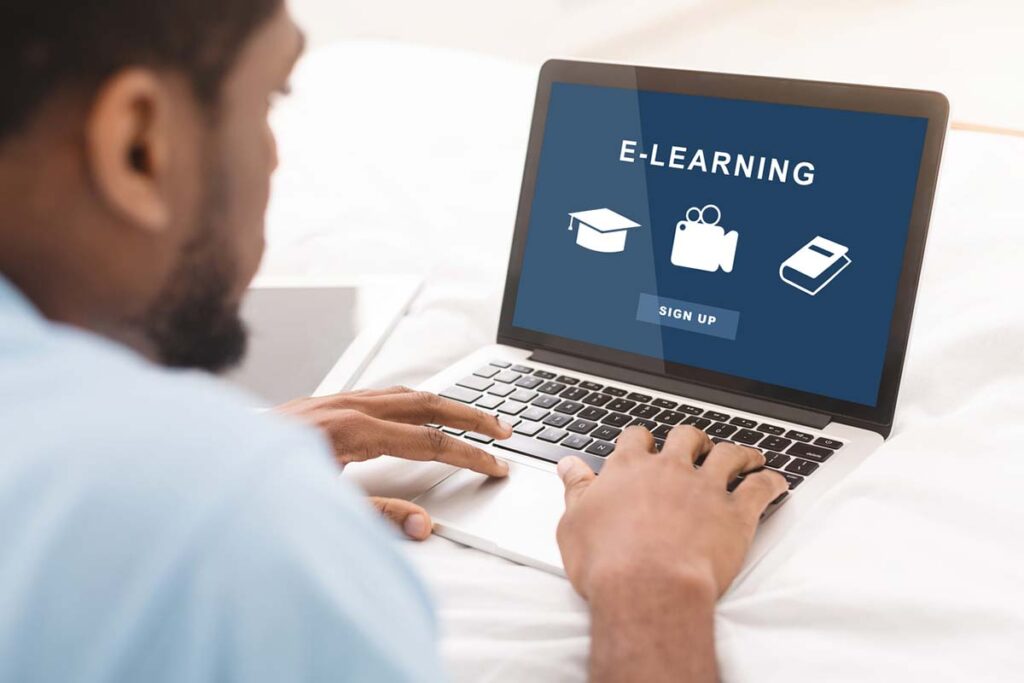Due to the current pandemic, successful digital learning strategies have become more important than ever before. Learners are expected to analyze and retain information presented to them through a screen, but digital distractions make it difficult for people to focus on the task at hand.
So how do we start to develop platforms that will engage learners around the world? This post will get you started on creating an effective eLearning development strategy, and provide tips for keeping learners excited.
Staying Relevant with eLearning Content
Current Content is King: While an attractive online interface will draw learners in, creating relevant, meaningful content is what makes a truly successful eLearning guide. Learners should be both engaged during the course and afterward, so they can reflect on the course material.
The first step in creating content that sticks is to engage readers on both an emotional and intellectual level. Choose topics that relate to the current political, social, and economic climate. When learners see that the course information applies to real world problems, they will stay motivated to learn more.
For example, if creating a curriculum centered around Diversity and Inclusion strategies, provide a brief history of how diversity in the workplace has developed and progressed over time. Incorporate news events, testimonials, and anecdotal evidence if you are looking to add a friendlier, more casual tone.
Learner Engagement: Keep It Simple
Fuel Curiosity With Simplicity: Learners must be allowed to explore your eLearning course and feed their curiosity. Luckily, you don’t need fancy visuals or flashy effects to do this.
Research suggests that we recognize the outlines of objects as quickly as we recognize photos of objects, so don’t overload your interface with gratuitous detail and color. Consider using line drawings to keep your learner focused on the essential content. Integrate visual components that both look eye-catching and convey information, such as slide-shows, interactive graphs, or maps.
Everything on the learner’s screen should be there for a reason. Try including relevant links that learners can click on to explore a certain topic in-depth, and provide recommended reading so that they can pursue their studies further.
Set Learning Objectives: Once your target audience is identified, you’ll be able to set clearly defined learning objectives. Make sure your learners know why they should be interested in taking your course, and how it will help them in the future.
Include a short section at the beginning of your course that both asks what learners want to get out of the course, and suggests how it could potentially help them improve their current skill set and meet their goals.
Testing and eLearning Design Development
The Importance of Repetition: Research shows that a great way to boost memory is repetition. When designing your course, try ending each module with a review quiz. This will help the learner understand the core concepts of the text and better prepare them for the final test.
Make sure these review tests are not graded. This provides the learner with a stress-free environment in which they can begin to build their knowledge.
Final Freedom: While multiple choice can be an effective quizzing technique, you will want to give your learner the freedom to create a final assessment with more than one right answer. For example, in a general business course, the assessment might include the construction of a personalized business proposal.
While the form of the assessment can be the same for everyone, you should encourage learners to select a specific area of the course and explore it further in the final project. This will help them become more emotionally invested in their work.
WeLearn’s Learning Development Blog: The Start of Your Journey
In a time of such uncertainty, it is important to provide learners with courses that both challenge them and make them feel supported. By keeping the learners’ wants and needs in mind during curriculum development, you are on your way to creating a learning system that is effective and engaging.
Have you ever completed an eLearning course? What were some of the most effective elements of it, and how would you integrate those elements into your course? Share your thoughts and opinions with us at WeLearn’s Learning Development blog, where together we learn.

